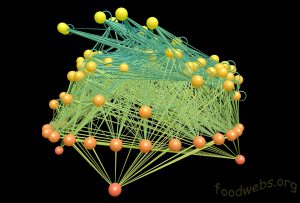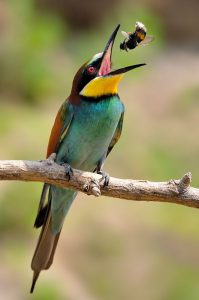

Algorithmic: we develop a novel algorithm to detect efficiently chordless cycles and show that these cycles are numerous in nicheoverlap graphs. We moreover investigate the factors influencing their presence, pointing out the important role of omnivores in these graphs.
Structure: we find that observed networks are far from random. We apply our analysis to niche-overlap graphs derived from some theoretical foodweb models. These investigations indicate that some of these models are unable to reproduce the structure of observed niche-overlap graphs; only a model based on evolutionary principles succeeded in reproducing closely the structure of niche-overlap graphs. Finally, by quantifying the competition between species, we reveal the prevalence of weak links in chordless cycles, and their strong effect in reducing the number of chordless cycles when they are removed from the network.
Dynamics: we simulate the abundance of species over time using systems of Lotka-Volterra differential equations. We then relate the persistence of species to their structural properties inside the networks using the generalized linear model. Results reveal a strong significant influence of the degree and to a lesser extent of the frequency of chordless cycles and of clustering coefficient. Finally, we study the influence of the weight of coefficients of interaction on the persistence of species in complete networks, revealing their strong influence on the persistence of species.
